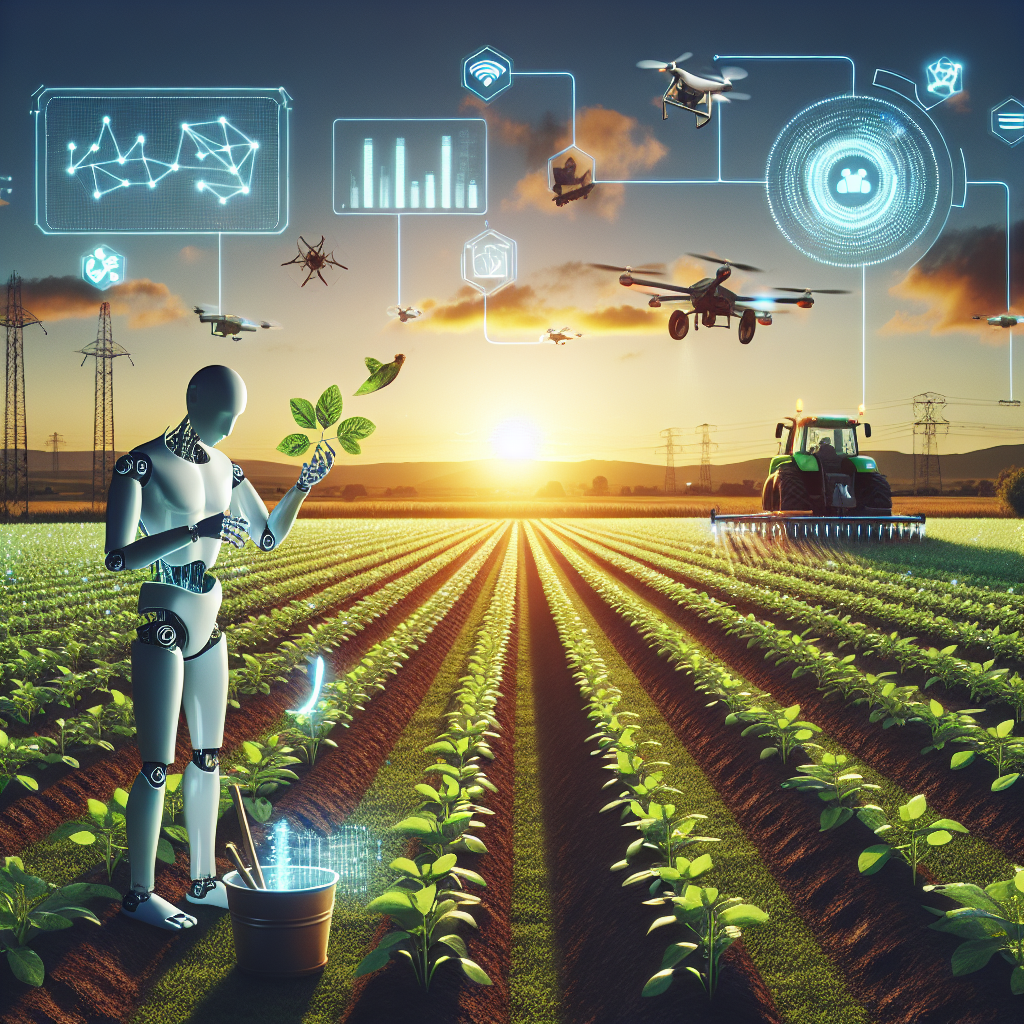As technology continues to advance at an exponential rate, the agriculture industry is no exception to the benefits of innovation. The integration of artificial intelligence (AI) in agriculture, also known as Agtech, has the potential to revolutionize the way we farm and produce food. From crop monitoring and predictive analytics to precision farming and autonomous machinery, AI deployment in Agtech is paving the way for a more sustainable and efficient future in agriculture.
One of the key areas where AI is making a significant impact in Agtech is in crop monitoring. Traditional methods of monitoring crops, such as manual labor or satellite imagery, are time-consuming and often unreliable. AI-powered drones and sensors, on the other hand, can provide real-time data on crop health, growth, and yield, allowing farmers to make informed decisions about irrigation, fertilization, and pest control. By analyzing this data, AI algorithms can detect patterns and anomalies that would be impossible for the human eye to see, enabling farmers to optimize their operations and maximize their productivity.
Another area where AI is transforming agriculture is in predictive analytics. By analyzing historical data on weather patterns, soil quality, and crop performance, AI algorithms can predict future trends and outcomes with a high degree of accuracy. This allows farmers to anticipate and mitigate potential risks, such as droughts, pests, or diseases, before they occur. By leveraging this predictive power, farmers can optimize their planting schedules, adjust their input levels, and plan for the future with confidence.
Precision farming is another key application of AI in Agtech. By combining data from sensors, drones, and satellites with AI algorithms, farmers can create detailed maps of their fields and customize their farming practices to maximize efficiency and minimize waste. For example, AI-powered machinery can adjust seeding rates, apply fertilizers and pesticides only where needed, and optimize irrigation schedules based on real-time data. This not only reduces costs and environmental impact but also improves crop yields and quality.
Autonomous machinery is also a growing trend in Agtech, thanks to advances in AI and robotics. Self-driving tractors, harvesters, and drones can perform tasks like plowing, planting, and spraying with precision and efficiency, freeing up farmers to focus on higher-level decision-making. These machines can work around the clock, in all weather conditions, without the need for breaks or supervision, increasing productivity and reducing labor costs. As the technology continues to improve, we can expect to see more autonomous machines on farms, performing a wide range of tasks with minimal human intervention.
In addition to crop monitoring, predictive analytics, precision farming, and autonomous machinery, AI is also being used in other areas of Agtech, such as livestock monitoring, supply chain management, and food safety. By tracking the health and behavior of animals with sensors and AI algorithms, farmers can ensure the well-being of their livestock and optimize their feeding and breeding practices. AI can also help farmers optimize their supply chains by predicting demand, managing inventory, and reducing waste. In terms of food safety, AI can detect contaminants, pathogens, and spoilage early on, preventing outbreaks and ensuring the quality and safety of our food supply.
Despite the many benefits of AI deployment in Agtech, there are also challenges and concerns that need to be addressed. One of the main challenges is the cost of implementing AI technology, which can be prohibitive for small and medium-sized farms. Additionally, there is a lack of standardized data and interoperability between different AI systems, making it difficult for farmers to integrate and scale their operations. There are also ethical and regulatory issues to consider, such as data privacy, algorithm bias, and the potential displacement of human labor.
To overcome these challenges and unlock the full potential of AI in Agtech, collaboration and innovation are key. Governments, industry leaders, researchers, and farmers need to work together to develop affordable and accessible AI solutions that address the specific needs of the agriculture sector. Data sharing and open standards should be promoted to ensure that AI systems can communicate and collaborate effectively. Ethical guidelines and regulations should be put in place to protect consumer privacy, ensure algorithm transparency, and promote responsible AI use.
In conclusion, the future of AI deployment in Agtech is bright and promising. By harnessing the power of artificial intelligence, farmers can improve their productivity, sustainability, and profitability, while also contributing to a more secure and resilient food system. With continued investment, research, and collaboration, we can expect to see even more innovative AI solutions in agriculture in the years to come.
FAQs:
Q: What is Agtech?
A: Agtech, short for agricultural technology, refers to the use of technology, such as artificial intelligence, robotics, sensors, and data analytics, to improve farming practices and increase agricultural productivity.
Q: How does AI help in agriculture?
A: AI helps in agriculture by providing real-time data on crop health, growth, and yield, predicting future trends and outcomes, optimizing farming practices, and automating tasks with precision and efficiency.
Q: What are the benefits of AI in Agtech?
A: The benefits of AI in Agtech include increased productivity, sustainability, and profitability, reduced costs and environmental impact, improved crop yields and quality, and enhanced food safety and security.
Q: What are the challenges of AI deployment in Agtech?
A: The challenges of AI deployment in Agtech include the cost of implementation, lack of standardized data and interoperability, ethical and regulatory concerns, and the potential displacement of human labor.
Q: How can we overcome the challenges of AI deployment in Agtech?
A: We can overcome the challenges of AI deployment in Agtech by promoting collaboration and innovation, developing affordable and accessible AI solutions, fostering data sharing and open standards, and establishing ethical guidelines and regulations.

